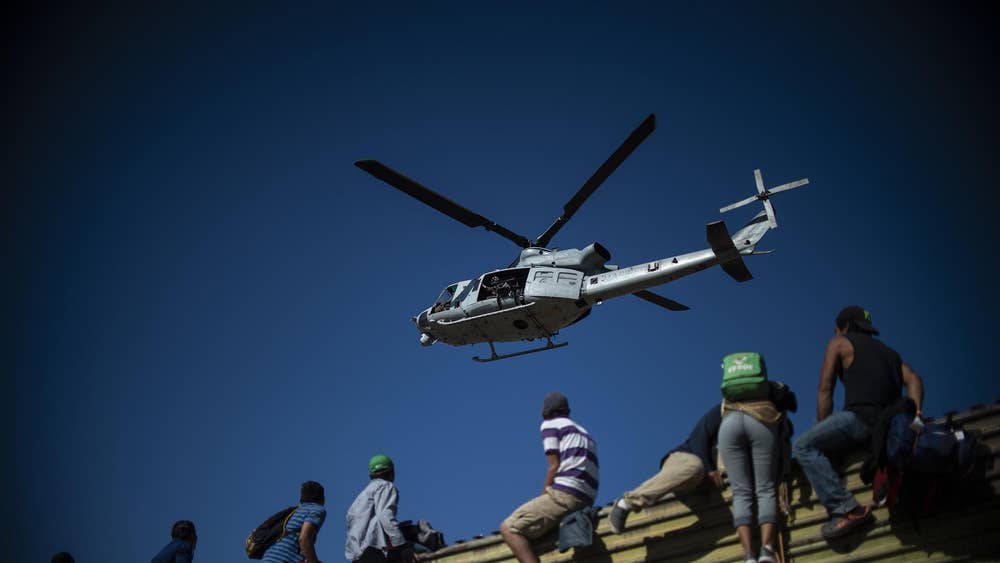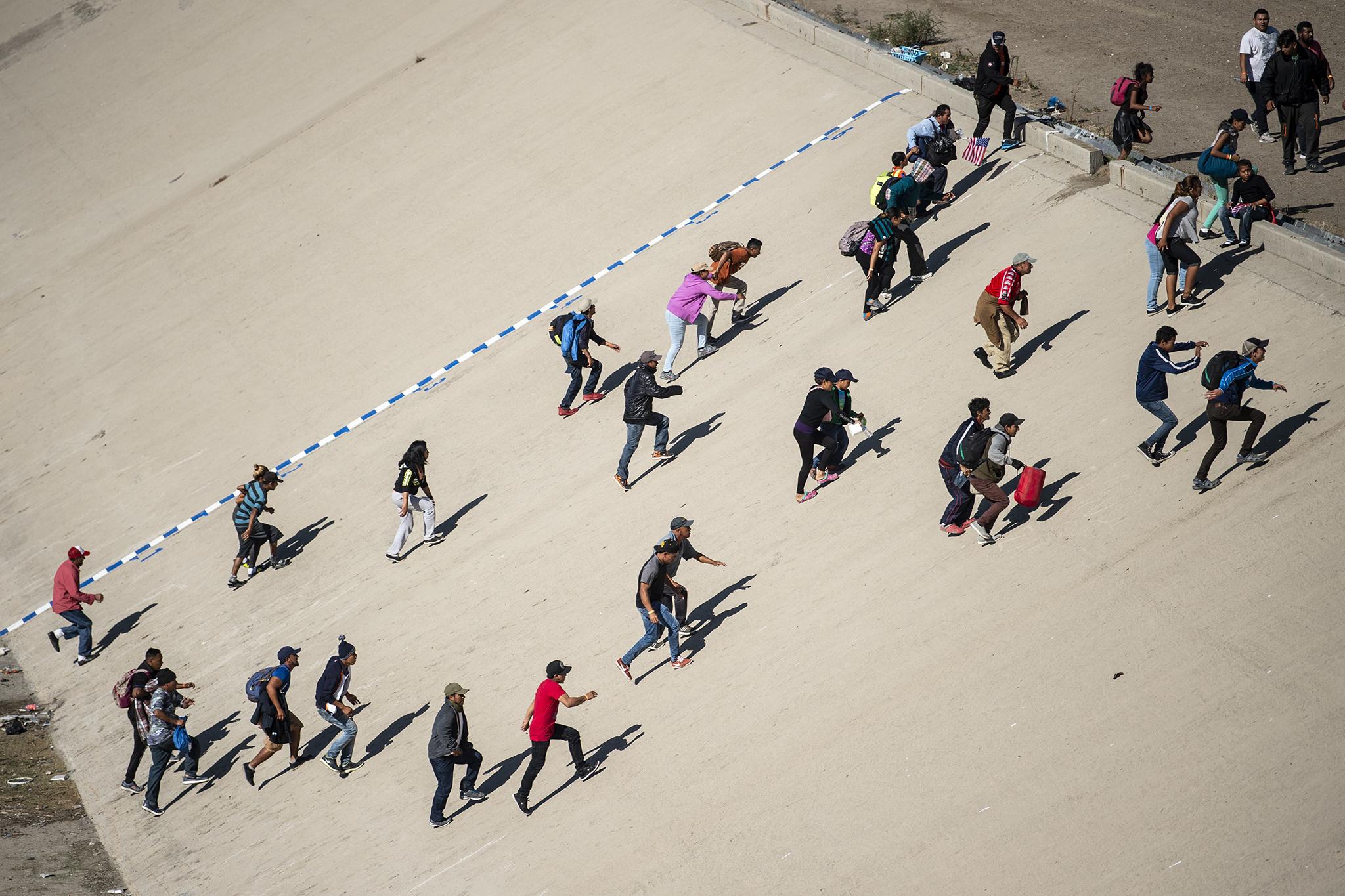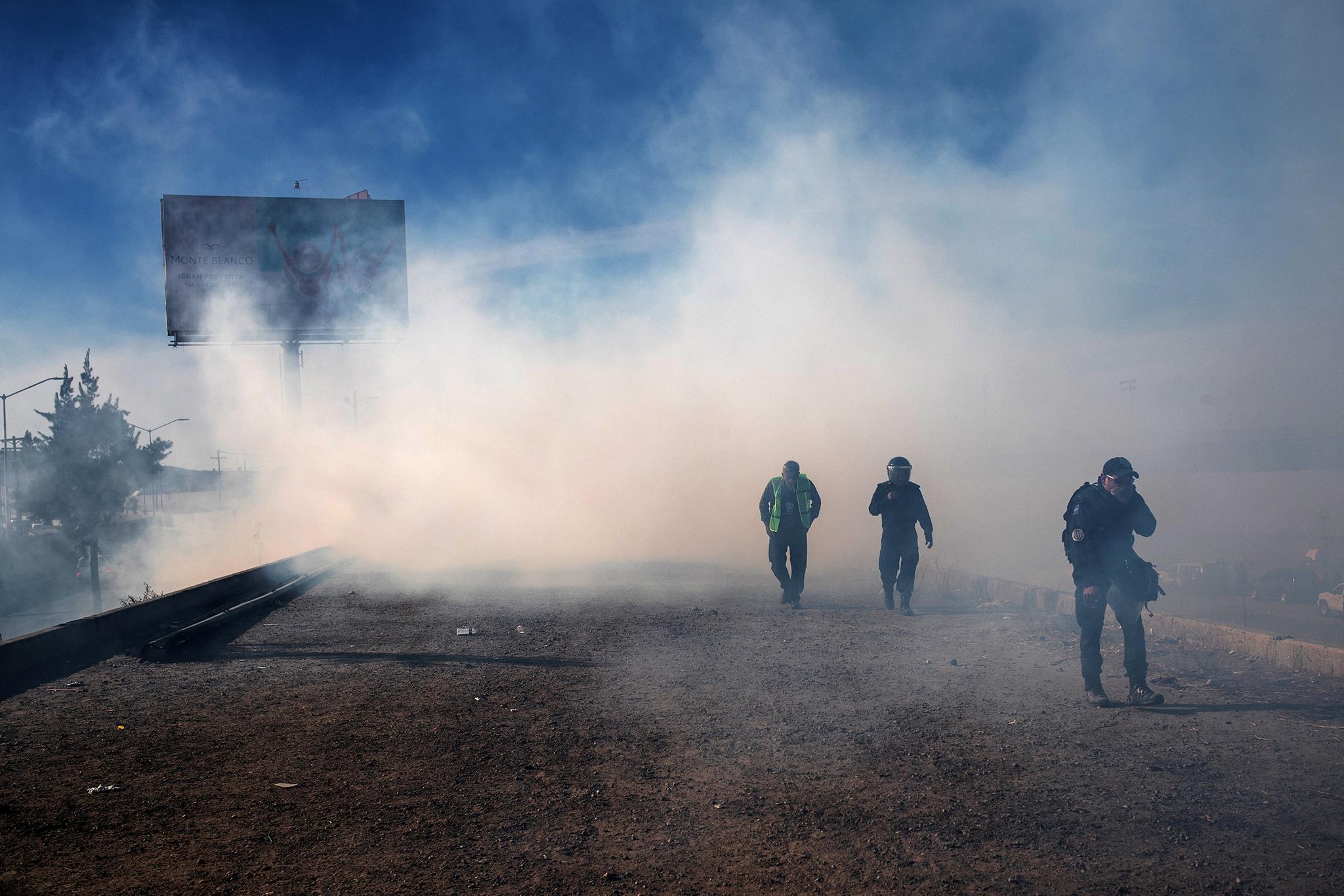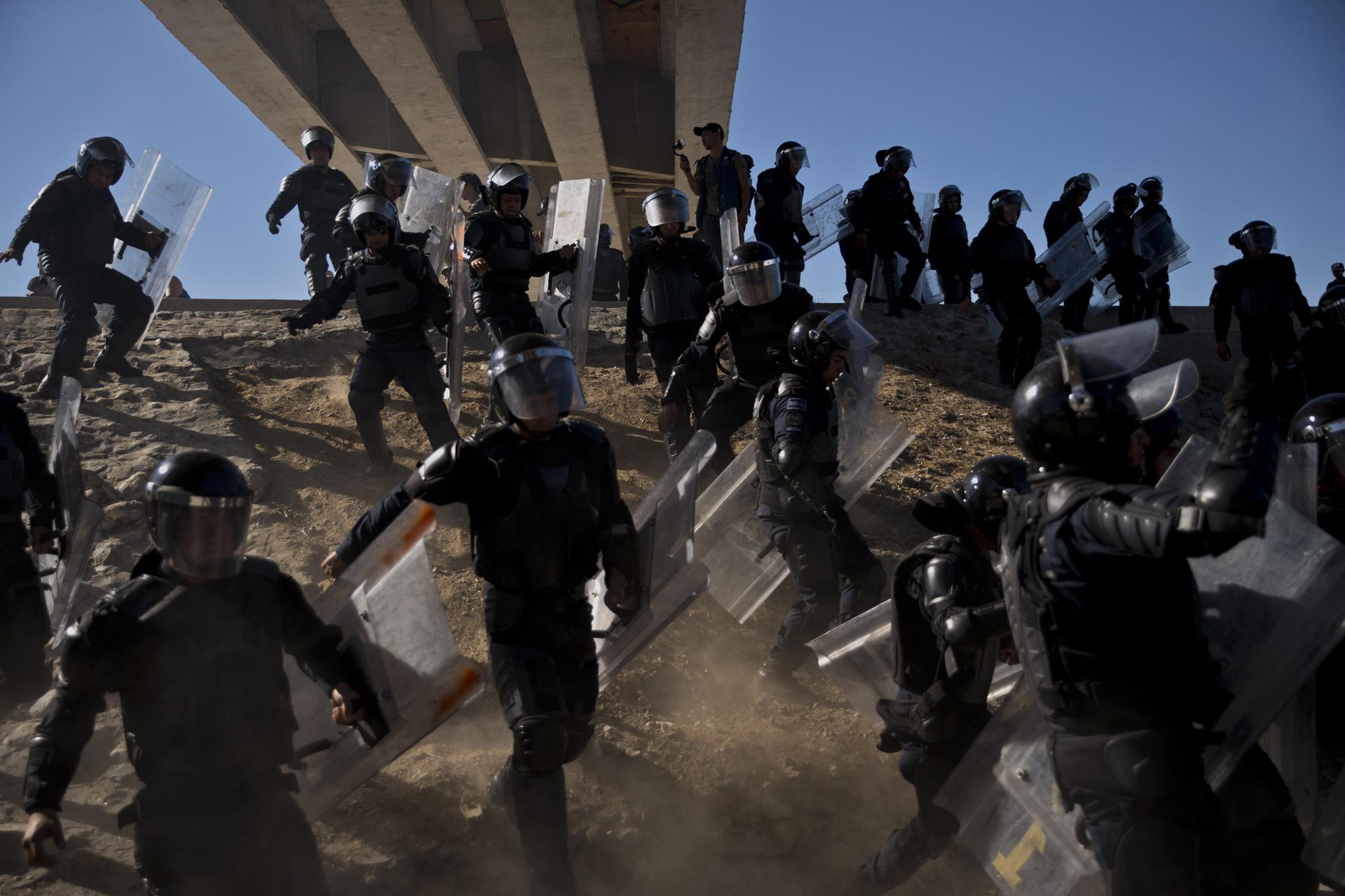Africa: How Climate Climate Change Contributes to Insecurity

Photo: Pixabay
...
14 FEBRUARY 2020
allAfrica.com
By Jerry Chifamba
Cape Town — In this allAfrica explainer we delve into the relationship between climate change and conflict on the continent
Levels of poverty, economic opportunities, and unemployment are key factors increasing the likelihood of conflict, and there is strong agreement that climate change is a major driver of violent conflict, according to the Institute for Security Studies. Climate affects the risk of violence within countries, and as global temperatures climb, the risk of armed conflict is expected to increase substantially, reports IPS.
But some of the biggest uncertainties are about how and why. Whether it's because climate change may cause economic shocks in the aftermath of a disaster or leads to failure of agriculture productivity, it all comes down to three things: civil war is a lot more likely when the economy takes a downturn; the economy is more likely to take a downturn when the agricultural sector is not productive; and the agricultural sector will likely be unproductive when temperatures are high and rainfall low, according to a UN report.
Ferrial Adam, an environmental justice activist who has been in the sector for about 15 years and is presently working on her PhD that looks at how people can use science to fight their environmental struggles says there's a link between climate change and violent conflict. "It's very clear that climate change is affecting the most vulnerable communities and as vulnerable communities are forced to find more water and food, that leads to violent conflict. So they'll be localised conflict but I also think that in the future we could probably see more conflict between countries over water and food," she said.
West Africa
Nigeria is one of the countries really feeling the impact of climate change, with sea levels rising while Lake Chad is shrinking, and desertification advancing rapidly. Repeated conflicts among nationals of different countries over control of the remaining water in the drying lake contributes to insecurity in the region.
Conflict between Nigerian herdsmen and farmers dates back decades, according to the International Crisis Group, but escalated drastically in recent years as climate change is driving herders south into Nigeria's central farmland. The years-long battle over land between herdsmen from the Fulani people and farmers in the central region known as the Middle Belt has grown dramatically. The root of the conflict lies in the forced southern migration, owing to drought, of herdsmen from their traditional grazing grounds, mostly in the northeast of Nigeria.
Now the nomadic Fulani herdsmen are in constant search for water holes and grasslands for their cattle, and due to land scarcity, herders are permanently relocating to areas that are already inhabited by farmers in southern Nigeria. Fulani herdsmen and Bachama farmers must now compete over scarce fertile land, furthering tension and violence between the two groups. But this migration into the savannah and rainforest of the Middle Belt did not just increase pressure on the land and pave the way for the conflict, but also created an opening for militant groups to establish themselves in areas around the Lake Chad Basin.
Southern Africa
Between January and April 2019, the region faced several weather-related phenomena such as tropical cyclones, Idai and Kenneth, which caused extensive flooding in countries such as Madagascar, Malawi, Mozambique, Tanzania and Zimbabwe.
Cyclone Idai, recorded as one of the worst tropical storms to ever affect Africa and the southern hemisphere, claimed hundreds of lives and left a trail of destruction, including severe damage to key infrastructure such as roads, bridges, schools and clinics. There are allegations of sexual exploitation of Cyclone Idai victims by local officials in the affected areas as hunger and destruction caused by the cyclone left hundreds of thousands of women and children vulnerable to abuse.
According to Oxfam, parts of Zimbabwe had their lowest rainfall since 1981 which has helped push more than 5.5 million people into extreme food insecurity. Meanwhile, Zambia's rich maize-growing area were decimated and exports are now banned, with over 2.3 million people left food insecure. The situation is worsening including in Angola, Malawi, Mozambique, Madagascar, Namibia, and Zimbabwe.
East Africa
Climate change is taking a toll right across the Horn of Africa, with increasingly erratic weather and low rainfall common in Kenya, Somalia, Uganda and Ethiopia. According to the U.N., more than 2.5 million people in Somalia were forced from their homes by drought and insecurity in recent years and many are now at risk of starvation. Militants also exploited climate crises to win legitimacy and Al Shabaab learned to take advantage of natural disasters by helping victims and legitimizing its power, writes Thomson Reuters Foundation.
In South Sudan, frequent droughts have disrupted rural livelihoods and exacerbated local conflicts between communal groups. Historically, violent conflicts between pastoral communities have been a recurring phenomenon in the region according to the Institute for Security Studies. Living under harsh environmental conditions and being frequently exposed to droughts, the region's people often fought over livestock and the access to water and grazing land. Communal conflicts in South Sudan killed thousands and displaced more. They've also impeded trade and agriculture, causing famines and crippling the local economy. Experts are becoming increasingly attentive to the role of climate change and more erratic weather conditions as an aggravating factor in the South Sudanese context.
On October 30, the government of South Sudan declared a state of emergency across 27 flood-affected areas. Floods are a seasonal and acute problem in South Sudan but they were unusually heavy in this rainy season, according to MSF, already present in several flood-affected areas. At least 800,000 - 900,000 people are estimated to have been impacted by the floods.
Adam says climate change is already causing localised conflicts in Kenya.
"When we were in north-east of Kenya, we were doing a bit of work in that area and we were driving past a man who had been fishing and had a rifle and so we stopped and asked why he needed a rifle. He said I have a gun for protection because people want to steal my fish from me. So that's some kind of conflict where people steal food from each other. If you look at the general picture of someone who's fishing, they are not working with guns and here was a guy with a rifle and he wasn't the only one. We went to interview some fishermen at the river and it was sunset and as we got there, they were all leaving and weren't interested in answering our questions. When we asked them why they were leaving, they said that it's because there are snipers from across the river who would shoot at them and then try to steal their fish. So it's actually happening right now," Adams said.
Adams said water scarcity in East Africa is already fueling conflict between countries too.
"So one of the things is Ethiopia wants to build a dam which is upstream from Kenya and it'll affect the water that flows into Kenya so really there's some anger rising between people in Kenya and people in Ethiopia. They make it a national issue, creating conflict between countries," Adam said.
But there's opportunity to respond to the threat ...
Acknowledging this, African countries came up with mitigation and adaptation strategies, including the idea of the Great Green Wall project, an African-led movement with an epic ambition to grow an 8,000km natural wonder of the world across the entire width of Africa.
Incredibly, the Great Green Wall - or some form of it - appears to be working. Since the birth of the initiative in 2007, and roughly 15% underway, the initiative is already bringing life back to Africa's degraded landscapes at an unprecedented scale, providing food security, jobs and a reason to stay for the millions who live along its path.
The Rwanda Green Fund signed an agreement with the Global Alliance for Smart Cities and Smart Villages in Africa to develop Rwandan villages into "smart green villages" in a bid to build communities' resilience to climate change. "In the Smart Green Village, we will bring all sustainable principles including low carbon gas emissions and energy efficiency. At this stage we are bringing model houses that are affordable with components of raw materials that are sustainable and that can be sourced and manufactured locally," said Hubert Ruzibiza, the Chief Executive Officer of the Rwanda Green Fund.
Nigeria's President Muhammadu Buhari announced robust plans and initiatives by his administration to reverse the negative effects of climate change in Nigeria. The plans were revealed in his address to the United Nations Climate Action Summit with the theme, "A Race We Can Win. A Race We Must Win."
In the water sector, Buhari said that Nigeria would issue a green bond for irrigation and construct multi-purpose dams for power, irrigation and water supply. He further pledged that his administration would strengthen solid and liquid waste management systems to attract more private sector investors, adding that "we will take concrete steps to harness climate innovative ideas by including youth in the decision-making processes as part of our overall climate governance architecture. We will mobilize Nigerian youth towards planting 25 million trees to enhance the country's carbon sink".
Prioritizing climate change, particularly as a national security concern, will assist the Nigerian government in mitigating a conflict that has such deep roots in the environment. Buhari's seven-point plans reiterates commitment to concrete actions towards the Paris Agreement goals. The importance of the president's speech in front of the whole world leaves Nigeria with no other option than to lead the way, writes Mohamed Yahya, Resident Representative, UNDP Nigeria.
In Zambia, President Edgar Lungu said climate change threatens to derail Zambia's economy, and disruptions to the rainy season have already dampened its outlook. The southern African country hopes to minimize the impact of climate change by increasing its reliance on renewable energy.
In Ghana, the government plans to replace its old "trotro" buses' engines with newer versions which produce lower emissions and formalise waste collection in informal settlements as part of a new plan to help its crowded capital withstand climate change and disasters.
Adams said governments across the continent need to do more.
"We've been telling [governments] since 2006 that they need ... renewable energy and governments have not listened and part of the reason is, I think some of them have vested interests in coal mining. It's not just about the coal mining but the areas that they're planning to mine is the waterbed - which is very important in terms of our water resources. So governments has been short sighted in the sense that we don't have water forever and we need to protect the water that we do have. Secondly, they don't seem to understand that coal is going to bring more greenhouse gas emissions that affects climate change as a whole; and mining the coal will pollute our water. So they obviously say one thing at an international meetings but when it comes down to action, they're doing the opposite," she said.
Communities need to start a climate conversation and unite for bold climate action.
"I think people are not directly using the term climate change. They are experiencing the impact and they're putting it in different words and descriptions because they are unable to explain in detail, the impact that they are having. Whether it's a small fisher or a farmer, they'll tell you, well I used to plant on this day but now I have to change it to this month. So there's definite awareness in that regard but they have not said this is climate change. But we have a lot of work to do with regards to education and awareness on climate change," Adam said.
INTERVIEW
By Jerry Chifamba
Cape Town — Levels of poverty, economic opportunities, and unemployment are key factors increasing the likelihood of conflict, and there has been strong agreement that climate change, is a major driver of violent conflict. Climate has affected the risk of violence within countries, and as global temperatures climb, the risk of armed conflict is expected to increase substantially. But some of the biggest uncertainties are about how and why.
AllAfrica's Jerry Chifamba spoke with Ferrial Adam, an environmental justice activist who has been in the sector for about 15 years. She is presently working on her PhD that looks at how people can use science to fight their environmental struggles.
Q: In your research and experience can you draw the link - if any - between climate change and conflict?
It's very clear that climate change is affecting the most vulnerable communities and as vulnerable communities are forced to find more water and food, that leads to violent conflict. So they'll be localised conflict but I also think that in the future we could probably see conflict between countries around water and food.
One example is when we were in north-east of Kenya, we were doing a bit of work in that area and we were driving past a man who had been fishing and had a rifle and so we stopped and asked why he needed a rifle. He said I have a gun for protection because people want to steal my fish from me. So that's some kind of conflict where people steal food from each other. If you look at the general picture of someone who's fishing, they are not working with guns and here was a guy with a rifle and he wasn't the only one. We went to interview some fishermen at the river and it was sunset and as we got there, they were all leaving and weren't interested in answering our questions. When we asked them why they were leaving, they said that it's because there are snipers from across the river who would shoot at them and then try to steal their fish. So it's actually happening right now.
So one of the things is Ethiopia wants to build a dam which is upstream from Kenya and it'll affect the water that flows into Kenya so really there's some anger rising between people in Kenya and people in Ethiopia. They make it a national issue, creating conflict between countries.
If you remember the riots that happened in Mozambique some years ago, it was also because of increased bread prices, so I think that as food becomes more expensive because of the impact of climate change, whether it's drought or floods. That definitely could lead to more unrest.
Q: How do you foresee these challenges playing out in future. In terms of government's role in managing climate change and conflict?
There's no doubt that these challenges are going to get worse, we'll probably see a lot more water wars, food wars. Which is Part of the reason for the Arab Spring was related to increase to the food prices. If we look at what Trump is doing in terms of holding other countries accountable or holding them to ransom because they won't sign a particular agreement, I think we'll find more and more of that happening.
I think that in the future, citizens will start to hold their governments accountable for the decisions that they make around climate change. So government will become more mindful of the decisions that they make because the ordinary citizen is not going to vote them in depending on what their choices are regarding the impact of climate change.
The Eastern Cape is part of South Africa that's been experiencing extreme drought. And there's conflict because of the water shortages in the sense that firstly it becomes a class issue so for the middle class, they just go walk and buy bottled water but for the poor, it's harder to do that.
And also with corruption you've got government then giving tenders to people who have water tanks to go and give water to particular areas but then people are doing it according to their friends and political party alliances. Or what they are doing is when government builds infrastructure they break it down again so that they can continue getting contracts to go out and give people water via trucks.
Even if you look at the Gift of the Givers going to drill boreholes so that people can get water, there was all that kind of conflict going, where there was an element of government corruption because they want something from you and so that caused quite a bit of a stir. The good thing is Gift of the Givers don't stand for that, and they made it quite public so I gathered that the politicians backed down a bit.
We've been telling since 2006 that they needed to go to renewable energy and government have not listened and part of the reason is, I think some of them have vested interests in coal mining. It's not just about the coal mining but the areas that they're planning to mine is the waterbed which is very important in terms of our water resources. So government has been short sighted in the sense that we don't have water forever and we need to protect the water that we do have.
The second part is that they don't seem to understand that coal is going to bring more gas emission that affects climate change as a whole; and mining the coal will pollute our water. So they obviously say one thing at an international meeting but when it comes down to action, they're doing everything opposite.
Q: Is the continent aware of climate change and it's impact now and the future?
I think people are not directly using the term climate change. They are experiencing the impact and they're putting it in different words and descriptions because they are unable to explain in detail, the impact that they are having. Whether it's a small fisher or a farmer, they'll tell you, well I used to plant on this day but now I have to change it to this month. So there's definite awareness in that regard but they have not said this is climate change. But we have a lot of work to do with regards to education and awareness on climate change.
Cape Town — Levels of poverty, economic opportunities, and unemployment are key factors increasing the likelihood of conflict, and there has been strong agreement that climate change, is a major driver of violent conflict. Climate has affected the risk of violence within countries, and as global temperatures climb, the risk of armed conflict is expected to increase substantially. But some of the biggest uncertainties are about how and why.
AllAfrica's Jerry Chifamba spoke with Ferrial Adam, an environmental justice activist who has been in the sector for about 15 years. She is presently working on her PhD that looks at how people can use science to fight their environmental struggles.
Q: In your research and experience can you draw the link - if any - between climate change and conflict?
It's very clear that climate change is affecting the most vulnerable communities and as vulnerable communities are forced to find more water and food, that leads to violent conflict. So they'll be localised conflict but I also think that in the future we could probably see conflict between countries around water and food.
One example is when we were in north-east of Kenya, we were doing a bit of work in that area and we were driving past a man who had been fishing and had a rifle and so we stopped and asked why he needed a rifle. He said I have a gun for protection because people want to steal my fish from me. So that's some kind of conflict where people steal food from each other. If you look at the general picture of someone who's fishing, they are not working with guns and here was a guy with a rifle and he wasn't the only one. We went to interview some fishermen at the river and it was sunset and as we got there, they were all leaving and weren't interested in answering our questions. When we asked them why they were leaving, they said that it's because there are snipers from across the river who would shoot at them and then try to steal their fish. So it's actually happening right now.
So one of the things is Ethiopia wants to build a dam which is upstream from Kenya and it'll affect the water that flows into Kenya so really there's some anger rising between people in Kenya and people in Ethiopia. They make it a national issue, creating conflict between countries.
If you remember the riots that happened in Mozambique some years ago, it was also because of increased bread prices, so I think that as food becomes more expensive because of the impact of climate change, whether it's drought or floods. That definitely could lead to more unrest.
Q: How do you foresee these challenges playing out in future. In terms of government's role in managing climate change and conflict?
There's no doubt that these challenges are going to get worse, we'll probably see a lot more water wars, food wars. Which is Part of the reason for the Arab Spring was related to increase to the food prices. If we look at what Trump is doing in terms of holding other countries accountable or holding them to ransom because they won't sign a particular agreement, I think we'll find more and more of that happening.
I think that in the future, citizens will start to hold their governments accountable for the decisions that they make around climate change. So government will become more mindful of the decisions that they make because the ordinary citizen is not going to vote them in depending on what their choices are regarding the impact of climate change.
The Eastern Cape is part of South Africa that's been experiencing extreme drought. And there's conflict because of the water shortages in the sense that firstly it becomes a class issue so for the middle class, they just go walk and buy bottled water but for the poor, it's harder to do that.
And also with corruption you've got government then giving tenders to people who have water tanks to go and give water to particular areas but then people are doing it according to their friends and political party alliances. Or what they are doing is when government builds infrastructure they break it down again so that they can continue getting contracts to go out and give people water via trucks.
Even if you look at the Gift of the Givers going to drill boreholes so that people can get water, there was all that kind of conflict going, where there was an element of government corruption because they want something from you and so that caused quite a bit of a stir. The good thing is Gift of the Givers don't stand for that, and they made it quite public so I gathered that the politicians backed down a bit.
We've been telling since 2006 that they needed to go to renewable energy and government have not listened and part of the reason is, I think some of them have vested interests in coal mining. It's not just about the coal mining but the areas that they're planning to mine is the waterbed which is very important in terms of our water resources. So government has been short sighted in the sense that we don't have water forever and we need to protect the water that we do have.
The second part is that they don't seem to understand that coal is going to bring more gas emission that affects climate change as a whole; and mining the coal will pollute our water. So they obviously say one thing at an international meeting but when it comes down to action, they're doing everything opposite.
Q: Is the continent aware of climate change and it's impact now and the future?
I think people are not directly using the term climate change. They are experiencing the impact and they're putting it in different words and descriptions because they are unable to explain in detail, the impact that they are having. Whether it's a small fisher or a farmer, they'll tell you, well I used to plant on this day but now I have to change it to this month. So there's definite awareness in that regard but they have not said this is climate change. But we have a lot of work to do with regards to education and awareness on climate change.
---30---













:max_bytes(150000):strip_icc()/headlines-after-elvis-death-52089340-58b5c3063df78cdcd8b9e090.jpg)


 © Eric BARADAT AFP journalist looks at sites from "America's Last Line of Defense" network set up by Christopher Blair who says he knows what to write for his right-wing "target audience" through years of "being embedded in their world"
© Eric BARADAT AFP journalist looks at sites from "America's Last Line of Defense" network set up by Christopher Blair who says he knows what to write for his right-wing "target audience" through years of "being embedded in their world"





